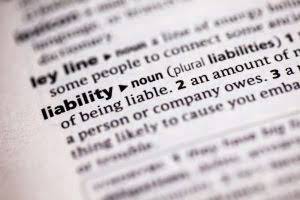Percentage of sales method: What it is and how to calculate

Please review the Program Policies page for more details on refunds and deferrals. We accept payments via credit card, wire transfer, Western Union, and (when available) bank loan. Some candidates may qualify for scholarships or financial aid, which will be credited against the Program Fee once eligibility is determined.
Do you already work with a financial advisor?
That percentage will be based on the company’s past experience with uncollectible accounts. Ultimately, the percent of sales method is a convenient but flawed process of financial forecasting. The percentage of credit sales method directly estimates the bad debt expense and records this as an expense in the income statement. Reviewing historical data of uncollectible accounts and the industry benchmark for bad debt expenses can work out the percentage needed for the forecast. Management and external users use this method to analyze the performance of the company and identify key indicators of improvement or signs the company might be in trouble over time.
The Ultimate Guide to Sales Forecasting From HubSpot’s Senior Director of Global Growth
The monthly accounting close process for a nonprofit organization involves a series of steps to ensure accurate and up-to-date financial records. As helpful as the percentage of sales method can be for financial projections, it’s not an all-in-one forecasting solution. Using data mined from your CRM — along with more in-depth forecasting methods — can help you make more consistent, accurate forecasts. A business would need to forecast the accounts receivable or credit sales using the available historical data. Understanding how quickly customers pay back credit sales over different periods, such as 30, 60, and 90 days, also helps. The percentage of sales method is a valuable tool for financial forecasting.
- For instance, if a customer buys a product from a business that has a step cost at 5,000 units, then every unit beyond those first 5,000 comes at a discounted price.
- It looks at financial items like the cost of goods sold (COGS) and accounts receivable as a percentage of your total sales.
- The alternative to the allowance method is the direct write-off method, under which bad debts are only written off when specific receivables cannot be collected.
- This more selective approach tends to yield budgets that more closely predict actual results.
- Checking up to see how the actual figure is progressing against the predicted one helps to manage accounts receivable accordingly and tighten collection processes for businesses.
What Is the Aging Method?
- Material prices or utility rates could have gone up uncontrollably during the year for example.
- The clouds are blocking your view and you have no idea where you’re headed.
- Ask a question about your financial situation providing as much detail as possible.
- This method just focuses on accounts receivable and can complement the percentage-of-sales calculations.
- When you can quickly create sales forecasts, you can adapt to sudden storms.
- The percentage-of-sales method is a financial forecasting model that assesses a company’s financial future by making financial forecasts based on monthly sales revenue and current sales data.
- It also can’t consider other financial changes like future bad debts that might impact sales.
These uncollectible accounts have virtually zero chance of being paid off, making them bad debt through and through. When you can quickly create sales forecasts, you can adapt to sudden storms. Leverage the percentage of sales method to get a clear vision of your financial future so you can map strategies that work. Larger companies allow for a certain percentage of bad credit in their financial analysis, but many small businesses don’t, and it can lead to unrealistic projections and unforeseen loss. Liz’s final step is to use the percentages she calculated in step 3 to look at the balance forecasts under an assumption of $66,000 in sales.
When it comes to estimating uncollectible accounts, your past financial information is usually the best indicator of future activity. With the percentage of sales method, you can quickly forecast financial changes to your business — including both assets and expenses — based on previous sales history. This allows you to adjust budgets, strategies, and resourcing to ensure you hit desired targets. Then you apply these percentages to the current sales figures to create a financial forecast, which includes the income and spending accounts.
Determine your estimated growth and most recent annual sales figures.
But, using it along with other techniques can provide an even clearer picture of your business’s financial health. These differences show that management can choose from various methods when applying generally accepted accounting principles and that these choices influence the firm’s financial statements. Once you’ve determined that PoC is a good fit for your organization, then you need to have a plan for implementation. Make sure your methods of calculating revenue and expenses are standardized across all projects. Decide which methods you will use to verify the expenditures incurred during the various periods for which you will be recognizing revenue and expenses. Set your accounts receivable team up for success so they can invoice quickly and accurately, and collect promptly upon completion.

Financial Disclosures for Affiliated Nonprofit Organizations
- In this case, it’s a set amount that represents how much bad debt or how many doubtful accounts you predict you’ll have.
- In this article, we’ll discuss what the method is, how to use it, show an example, and illustrate some of its benefits.
- Learn how to use the sales revenue formula so you can gauge your company’s continued viability and forecast more accurately.
- That means that estimating uncollectible accounts is a necessary task if you want to produce GAAP financial statements for potential or existing lenders and investors.
- When conducting market research, begin with a hypothesis and determine what methods are needed.
- For example, if the cost of goods sold has historically been 30 percent of sales, assume that trend will continue.
- Multiply the total accounts receivable by the historical uncollected accounts percentage to predict how much these bad debts might cost for the time period.
When conducting market research, begin with a hypothesis and determine what methods are needed. Sending out consumer surveys is an excellent way to better understand consumer behavior when you don’t have numerical data to inform decisions. If a client is suddenly complaining about percent of sales method accounting the products or services from a previous invoice months after the fact, this is a big, bad sign that something else is really the root problem. Have you ever found yourself frustrated with your TV or internet provider, and promptly get on the phone to try and drive down the price?
Estimating Uncollectible Accounts

For example, you can use it to forecast next month’s sales by averaging the previous quarter. The straight-line method assumes a company’s historical growth rate will remain constant. Forecasting future revenue involves multiplying a company’s previous year’s revenue by its growth rate. For example, if the previous year’s growth rate was 12 percent, straight-line forecasting assumes it’ll continue to grow by 12 percent next year.

Financial Accounting

In reality, you could have numerous delinquent accounts and long-term debt impacting your actual cash flow. Review your past financial statements and evaluate the relationship between bad debt write-offs, credit sales, and receivables balances. This forecasting method uses estimated overarching sales growth to determine changes to any financial line items that directly correlate to sales.

Module 6: Receivables and Revenue
For instance, creditors might compare interest expense to sales to identify whether the company is able to service its debt. If interest expense rises in relation to sales each year, creditors might assume the company isn’t able to support its operations with current cash flows and need to take out extra loans. This is not a good sign, but keep in mind this method is a starting point for financial statement analysis. The main advantage of the allowance method is that it recognizes all expenses related to a revenue-generating event in a single reporting period.
